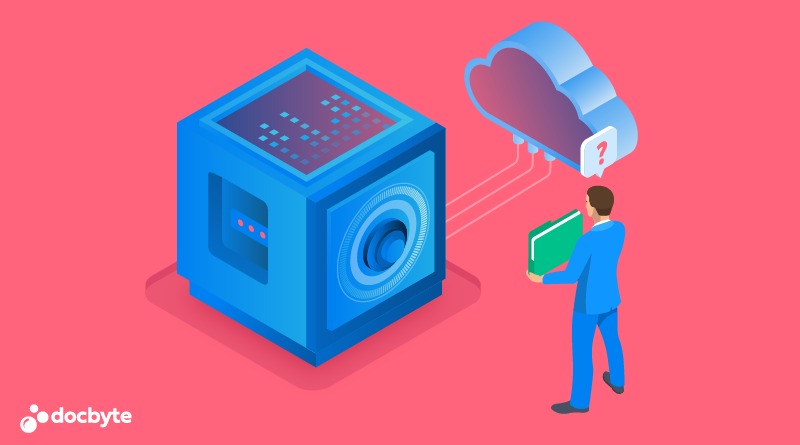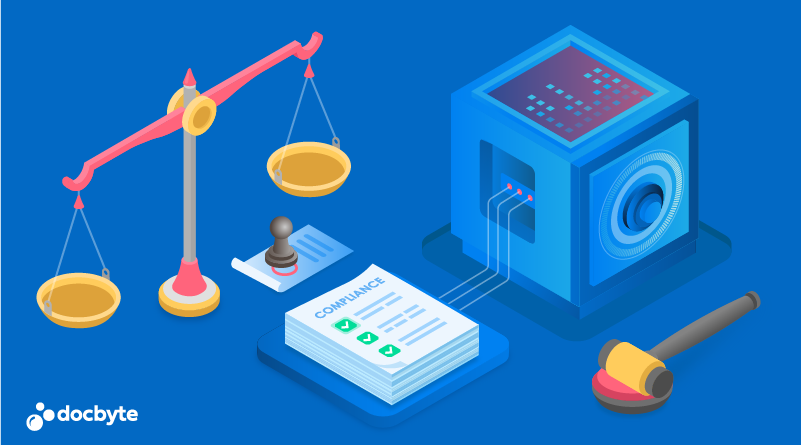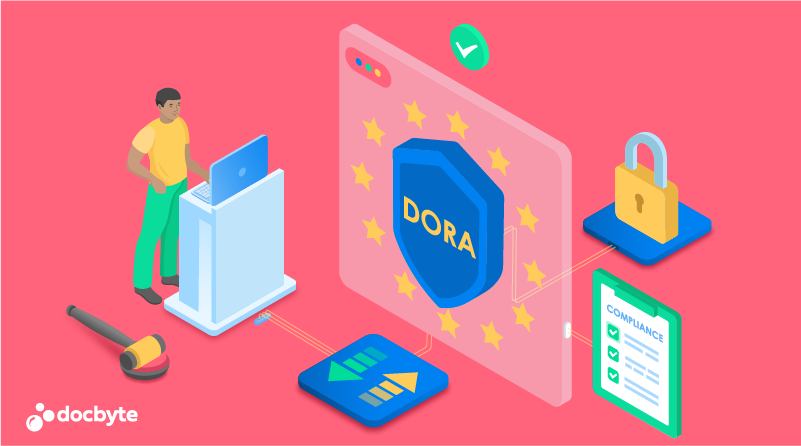Ever since the beginning of time, data preservation and management have been a constant process in one way or another. Now, with the digital era, this task has become more accessible, simpler, and at the tip of fingertips.
These are indeed crucial factors considering the significance of information. With the advancement of technology and the internet and digital documents taking over, digital archiving has become a necessity.
But what is Digital Archiving in detail? Some say it’s a tale of adaptation; some agree it’s transformation. However, everyone agrees that e-archiving is responsible for preserving data for easy accessibility while preventing any loss/corruption of valuable information.
Since the creation of the Document Management System (DMS) in 1999, it hasn’t been used for its general purpose. It can be noted that currently, many cases that use DMS for achieving require more attention for effective results.
Therefore, replacing a DMS with a digital archiving solution would ensure meeting the challenges of long-term digital preservation – boosting accessibility and ensuring information security.
This blog is a comprehensive guide to the answer to the above question what is digital archiving? Let’s explore its purpose and why it spreads far across the digital landscape. Walk with us in this dynamic realm of digital preservation.
Definition of Digital Archiving
If we start with the basic digital archive definition, it is a process of preserving and organising digital data for long-term access and retrieval. Simply put, it’s a substitute for the paper archive, involving a systemic storage of electronic records and information. I hope the question “What is digital archiving?”
E-archiving includes building a structured approach to store digital records while maintaining integrity securely. This process is achieved by thoroughly implementing tools and strategies best suited to modern world requirements. In simple words, a digital archive not only uploads and saves a file on your device but is a means of meeting the demands of this digital era.
Objectives of Digital Archiving
So we have understood what digital archiving is; now let’s discuss what raised the need for digital archiving and the basic purpose behind it. E-archiving holds various significant objectives to underline its importance in the digital era. Starting with a primary aim, i.e., ensuring long-term data preservation while preventing data from corruption.
Data integrity is crucial, but how can it be obtained? This is achieved by adding checksums; these checksums help maintain data integrity. The second core objective is to make the data accessible for efficient retrieval. Digitalising physical assets helps in cost saving. Furthermore, recovery is also prioritised.
Importance of Digital Archiving
The importance of digital archiving cannot be over or understated.
The following key points highlight the significance of e-archiving.
1. Safeguarding the Digital Realm
While googling, you might come across information from past years. This happens because of digital archiving.
2. Data Integrity
Data archiving systems are known for their robust techniques that prevent data loss, corruption, or unauthorised modification. Therefore, data integrity is the main focus here while maintaining accuracy.
3. Efficient Retrieval
With files being digitised, retrieval of data has become easier than ever. This feature helps in improving productivity and helps in decision-making.
Overview of the Article
Preservation and management of information is essential in today’s world. This article is a roadmap highlighting the importance, definition, objectives, and key components involved in e-archiving.
We know despite the consistent innovation, data remains vulnerable. With information at stake, we risk losing small bits of our lives; however, these small bits can cause severe damage in the case of professional data.
Talking about data, what is data? We’ve grown up learning the basic definition of it being raw facts and figures, which transform into valuable information; it can be in any form or type. When there is data, there is a need for archiving.
For anyone new to the concept and who wants to adapt to the new technology, this article is the right place for you! Starting with the basic definition of ‘what is digital archiving,’ it further delivers enough insight into its cornerstones and significance. Get a handful of tips on setting your strategy for archiving and the steps for data preservation.
Why does Digital Archiving Matter?
E-archiving holds great significance in today’s digital world. It holds a significant role in storing digital information, whether personal or business records. Let’s stumble upon its evolution and get a deep understanding of its mechanism by intriguing its key components.
Evolution of Archiving
The storage of important data or documents has always been a requirement of humanity. Storing important information from parchments, pebbles, and clay tablets to paper documents is the revolution leading now to the globalisation of electronic archiving.
E-archiving is the blessing of modern-day digitalization. The shifting of the real to the virtual world, i.e., currency in the form of cryptocurrency, and in the future, with the advent of the Web 3.0 metaverse, is going to lead the digital world. Just like this, the replacement of paper documents with electronic archiving has made storage, security, and preservation of our important data much easier.
What’s the mechanism behind it?
It’s crucial to understand the mechanics and workings behind digital archives, so it will be helpful for you to trust and use digital archives without worrying about data security. The core importance of using digital archives is ensuring the accessibility of digital information, which can be achieved by using dedicated software and updated storage devices.
- The first step is the gathering of accurate data and then categorising it further for better working. This step is important as extracting metadata and plausible information from data increases retrieval accessibility.
- Now comes the data storage. All safety measures that are required to preserve data integrity are the sole purpose of using advanced algorithms. Regular cycles of integrity checks are also included.
- The data being stored is coded and decoded from sender to receiver to confirm the security. This encrypted form of data allows only restricted users to alter the stored data (if necessary).
- Lastly, it is essential to monitor data regularly and transfer it to an upgraded and reliable storage space to prevent data loss.
Why is Archiving Required?
Loss of data may have adverse effects in many cases. Data loss is still a critical factor to consider, even in this technology era. No matter how smart technology gets, it’s still vulnerable to threats like data corruption or manipulation, hardware failure, cyberattacks, or unwanted accidental deletion of data.
Data archiving helps prevent these threats and ensures data reliability and perseverance. Furthermore, with regular monitoring and regulation, archiving can be strengthened and updated according to changing requirements.
Key Components of Digital Archiving
Let’s talk about the critical components now. Every part plays a significant role, from the specialised archiving software to data transfer between two devices.
- Data repository – handles storing of digitalised information.
- Archiving software – handles effective management of archiving.
- Metadata – helps in efficient indexing and retrieval after archiving.
- Access and security control – prevents unauthorised users from accessing the data.
- Data integrity – uses algorithms and integrity checks to prevent data from corrupting and authorised modification.
- Compliance checks – meet legal and regulatory requirements.
- Data transfer strategy – keeping the data format and storage medium updated with evolving technology.
Why is Preservation of Data Important?
With the changing times and digital dawn peeking at us, the preservation of data has become essential. It helps underline the smooth functioning of daily life and organisations while safeguarding heritage. The points below highlight the utmost importance of data preservation.
1. Data Loss Prevention
Throughout time, we have learned how data plays a vital role in structuring our daily lives. However, it is important to note that data in any form is vulnerable. From hardware failures, software bugs, and cyberattacks to even natural calamities, data remains at risk.
Data preservation protects the data and shields the information against uprising threats while ensuring it remains unchanged and unaltered.
2. Enhanced Data Integrity
Data integrity is the cornerstone of the reliability and accuracy of data. With changing times, keeping data in its original form is essential. Data preservation focuses on mechanisms that prevent data from corrupting and authorised access or modification.
Data integrity also involves controlling access to data. Only authorised users or processes should be able to access, modify, or delete data. Access control mechanisms, such as user authentication and authorization, play a vital role in maintaining data integrity.
Authenticity relates to the trustworthiness and reliability of data. It ensures that the data’s origin and source are genuine, and it has not been altered or tampered with. Authentic data is considered to be accurate and reliable.
3. Accessibility and Retrieval
Data is preserved with the sole purpose of eased accessibility. However, if the preservation practices are outdated or compromised, the accessibility and retrieval of data becomes difficult. Therefore, preservation mechanisms focus on providing a robust yet prompt framework for effective retrieval and reliable access to data.
4. Searchability and Efficiency
Efficiency and searchability involve the use of metadata management. Metadata makes indexing and searching easy and quick. With a properly structured index, users can easily locate specific information.
Types of Digital Archiving
Digital archiving consists of a series of interrelated techniques, each addressing a specific objective and requirement. Before diving deep into the topic.
Let’s address some of the broader categories of digital archiving.
- Institutional archiving – this holds digitalisation of cultural and scholarly heritage like books, manuscripts, and historical documents.
- Email archiving – preserving emails for compliance and legal purposes. It validates that every communication is retainable, searchable, and accessible.
- Digital media archiving – along with textual data, digital data (e.g., audio, video, and images) also require archiving.
- Web archiving – with the changing trends, filling up online databases by storing websites, blogs, or social media posts has taken over. Now you have more content to archive.
Active vs. Passive Archiving
| Active Archiving | Passive Archiving |
| Data that is frequently used or modified is dealt with in active archiving. This makes data readily accessible with frequent updates and uses a fast storage solution.
Advantages: Accessible and updated data, efficient data management, and real-time updates. |
Data (not actively used) stored just for compliance, legal, historical, or reference purposes uses passive archiving. It focuses on long-term preservation.
Advantages: Cost-effective storage unit, long-term preservation, and reduced management overhead. |
Cloud-Based vs. On-Premises Archiving
| Cloud-Based Archiving | On-Premises Archiving |
| Cloud-based archiving refers to storing data in remote servers provided by a third-party cloud service.
Advantages: Remote accessibility from anywhere, scalability, reduced storage cost, and automatic update. |
On-premises archiving digitalises data and assets within an organisation’s infrastructure.
Advantages: Predictable cost, security, low latency rate, and complete data control. |
Data Archiving Supported Media Types
When it comes to archiving, it is not just limited to text. Each supported type of media has its unique requirement for preservation and accessibility, and digital archiving designs are the perfect solution to accommodate each of these types.
Let’s know more about each of the supported media types.
- Beginning with the basic media type: textual data. Textual data contains reports, documents, emails, or other text-based content and information.
- As technology started to take control, graphical data soon became equally important to texts. Graphical data contains images and videos.
Images: Data in the form of photographs, illustrations, and scanned documents. Videos: Personal or professional videos - Audio data included music and recordings (audio and voice).
- Structured data became another part of media types when databases and datasets gained popularity.
- Software code and applications became a necessity to maintain historical software versions.
- Archiving websites and web content is a means of preserving online content.
Steps to Follow for Digital Archiving
Digital archiving is a systematic approach that ensures both the preservation and accessibility of digitalized information and assets. Here are some steps to pursue while initiating effective archiving:
1. Assess Your Current Data
The first step includes stocking the currently available data. While doing so, here are some factors that need consideration:
- Start with identifying the sources of your data. It can be either on a device or server cloud storage or even a combination of these.
- After identification of sources, work on categorising your data according to its types. The data can be in any format, either documents, images, or even videos. It can be structured data or a website. It is essential to understand the nature of data in order to make informed archiving decisions.
- Know the volume of data to choose the right storage unit for archiving solutions.
- Is your data relevant for archiving? Sometimes data may be outdated or obsolete and archiving it would only consume space. Do consider the relevance of the data.
2. Select an Archiving Method
After accessing data, the next step includes choosing the appropriate method of archiving.
Here you need to consider the following aspects:
- Is your data frequently accessed, updated, and used? If yes, you need to opt for active archiving techniques. If not, passive archiving is the correct option for you.
- What are your storage preferences? Do you need the data on a remote server with reduced cost and automatic updates? If yes, cloud-based archiving is your ideal solution. In case you prefer storing inside a recognized infrastructure with predicted cost and low latency rate, then you should go for on-premises archiving.
- Which software meets your archiving goals? Whatever your choice, simply make sure it aligns with your strategies and meets your retrieval expectations with long-term preservation goals.
3. Implement Archiving Procedures
With your archiving method chosen, it’s time to implement archiving procedures:
- Begin with establishing archiving policies. These policies should highlight the data that requires archiving, how to archive it, and then decide on the access control. Remember to align these policies with the goals and compliance requirements of the organization.
- The next step in this series includes the management of metadata for effective indexing.
- Who has access to retrieve and modify the archived data? Step up your security smartly.
- Always have a backup plan to safeguard the data from potential loss or corruption.
4. Monitor and Maintain the Archive
After archiving the data, regularly keep monitoring and maintaining it,
- Regularly audit your archives to ensure integrity, accessibility, and compliance of data.
- Check for updates frequently.
- Keep your software and systems updated to address security vulnerabilities.
- Monitor your storage capacity and always plan expansion if the archive grows.
- Provide proper training on the management of archives.
Future Trends in Digital Archiving
Day by day, Digital Archiving is consistently evolving, just like any other cloud technology. No matter what hypotheses are made, a predictable list of trends is always around the corner.
AI and Machine Learning:
- Optimal Data storage: AI will automate the processes of data analysis, data classification, and accurate data storage. This will ultimately help businesses in error handling and data security.
- Visual Recognition: In future trends, AI will help electronic archives identify the content within visuals, such as images, videos, and audio files. Imagine visiting New York with your family, and the digital archiving system, besides storing your New York pictures, also keeps a record of the specific place and everything around you.
Blockchain for Data Integrity:
- Immutable Records: Involving a peer-to-peer ledger system, Blockchain Technology, with its unique decentralised authority, comes with a perk of unalterable data ledgers for digital archive systems. These immutable records ensure data integrity, ultimately enhancing the efficiency and reputation of the organisation by reducing errors.
- Authentic Digital Records: Blockchain Technology is the focus of businesses and individuals to verify digital records. Again, through its peer-to-peer network, it becomes almost impossible to tamper the data in archived systems, hence playing a key role in maintaining Data Integrity.
Enhanced Search and Retrieval:
- Natural Language Processing (NLP): Considering the trends of modern-day human prompt requirements, NLP will help archiving systems to understand, process, and respond to human prompts more efficiently, thus becoming more user-friendly.
- Semantic Search: This technology just like NLP will provide a more user-friendly and fast environment instead of just matching the keywords. Keyword intention understanding by archiving systems will be a great advancement that will revolutionize the world of digital archiving.
Greater Emphasis on Security:
- Advanced Encryption: After just covering Data Integrity, Data Security again has to be considered due to its significance. These advanced mathematical algorithms will help keep data unreadable (encrypted) except for the sender and receiver. Advanced Encryption methods will be used by archiving systems as a protective layer against cyberattacks, phishing, or unauthorized access.
- Multi-Factor Authentication: For further Data security, this multi-factor authentication technology will help digital archiving systems ensure an extra layer of protection through any confidential PIN or password, thus protecting from hackers.
Sustainable Archiving:
- Sustainability: Archiving solutions will avoid E-wastage and achieve data sustainability by optimizing power consumption. Low-power storage devices and eco-friendly data centers reduce the environmental impact of data storage, more preferably using renewable energy sources.
- Disciplinary Measures: By implementing disciplinary measures, organizations achieve a sustainable data feat by depleting outdated data in archiving systems consistently.
Archiving of Evolving Data Types:
- AI will also help archiving systems be more intelligent to respond to VR and AR datatypes. Virtual Reality is becoming the bread and butter of the Gaming industry. New and updated archiving systems will help organizations better understand and store such digital experiences.
- The trend of Active Archiving will be a revolutionary change for the users. It will be the best solution for online reliable and cost-efficient data storage. “Archive documents digitally” is a major paradigm shift that is making most organizations stand out.
Conclusion
Digital Archiving is becoming a true defender of our digital collective heritage in this world of the digital realm. Ignoring the organizations and individual gaps helps us define our legacy digitally by preserving them for future use. Therefore, today, digital archives are becoming more and more significant to organizations and businesses worldwide.
Archiving digital media, where data is now being stored and managed in different forms and locations, is helping our content to remain accessible and meaningful for future generations. As per reports, more and more challenges are being faced by digital archiving every day, and we are progressing to make it safer and more secure for users.
As we peer into the future of digital archiving, we glimpse a landscape marked by innovation, security, accessibility, and sustainability. Archive Digital is depleting all its core issues with the advent of AI, Blockchain Technology, Machine Learning, and Advanced Search capabilities.
What is digital archiving? This question has been comprehensively addressed above. For further understanding and queries, you can visit us here and make your mind well-versed in the world of digital archiving.
Recap of Digital Archiving Importance
The Significance of Digital Archiving isn’t more in disguise.
Let’s discuss some points
- Saving the digital legacy for future generations.
- Guaranteeing the reliability and integrity of the data.
- Observing requirements for conformity with law and regulations.
- Making it possible for effective data retrieval and decision-making.
- Giving us important historical insights.
Encouragement for Implementation
If you haven’t already, you should start digital archiving immediately. Whether you are a large corporation or a single person has no bearing. Digital archiving benefits all parties.
Digital archiving requires some actions to obtain its utmost benefits.
- Identify your digital belongings to keep track of your digital documents and requirements.
- The next steps come with the satisfaction of your chosen best possible way to store your digital files. This can be made possible by using external devices or web services.
- A proper method and techniques are required for appropriate storage of digital content. Just like the tuning of automobiles, our digital equipments require frequent checks to make it secure and well-functioning.
Final Thoughts on the Future of Digital Archiving
Electronic archiving is offering a pathway for further technological advancements, making content easily accessible to its users and new ways of data encryption. Modern-day advancements like AI and machine learning, blockchain, and intentional accurate searching are looking to make digital archives well-suited for upcoming generations.
With our familiarity and knowledge of upcoming trends and technologies, the future of digital legacy preservation is well in safe hands.
FAQs
- What is meant by digital archiving?
Digital Archiving is a modern way of storing and stacking digital information so that it can be altered and accessed in the future by authorized users. Digital content can be an infinite amount of data that is created or stored in electronic archives, such as texts, images, audio, video, etc. Just as when information is shifted from basic digital storage to electronic archiving, an additional perk of data security is already there. Just like any other advancement, this has the potential to meet the hierarchy of basic needs for the future generation, leveraging digital legacy preservation.
- What is the main purpose of digital archiving?
Currently, digital archiving is being used just because of its data accessibility. It means that your digital content is easy to organize, find, and ready to use when required without any problem. Data preservation is also one of the main reasons people use it. Digital archives offer commercial trust through the security of your digital documents and making them more compatible with different devices.
- Why is digitising archives important?Digital archives have already established their significance through their tons of benefits which are discussed below:
- Reduction of space and costs: Digital archives are a great advancement that reduces the space and cost required to preserve documents traditionally.
- Better Searching: Digital archives can be embedded with AI for semantic searches and robust indexing that ultimately makes them a significant need for data storage.
- Better Security: Whether it is at the organizational or individual level, data security and integrity are the most important aspects of digital archives that solidify their importance.
- More Accessibility: Giving a better user experience is always a great tactic to stand out for yourself. Digital archives are best in terms of accessibility to their users.
- What types of digital information can be archived? As the technology progressed, the data type changed from texts to images, videos, software codes, and web content. Digital archiving is not just limited to textual data but also images, videos, audio, software code, web content, and structured data.







